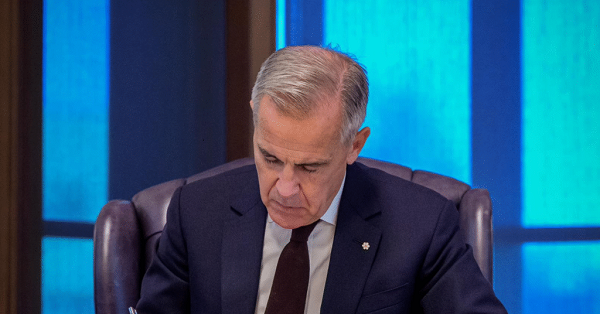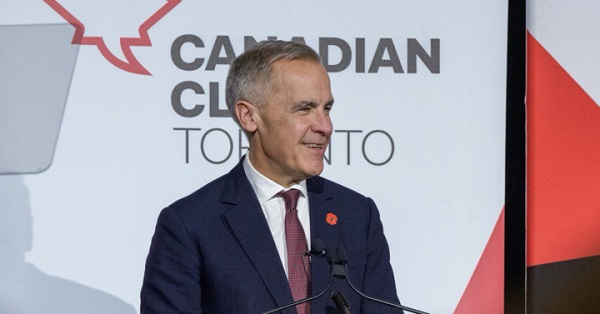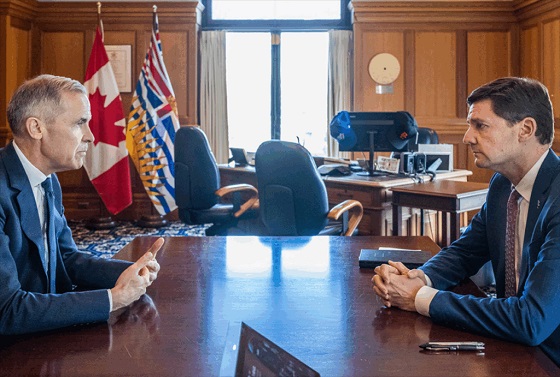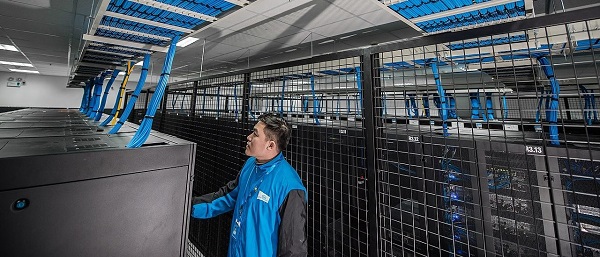Business
Trudeau gov’t threatens to punish tech companies that fail to censor ‘disinformation’

From LifeSiteNews
A report from the House of Commons Heritage Committee claimed that ‘some individuals and groups create disinformation to promote political ideologies including extremist views and conspiracy theories or simply to make money.’
A report from a Canadian federal committee said MPs should enact laws to penalize social media and tech companies that don’t take action to quell so-called “undesirable or questionable” content on the internet.
MPs from the ruling Liberal, New Democratic Party (NDP), and separatists Bloc Québécois party on the House of Commons Heritage Committee summarized their opinions in a report.
“The Government of Canada notes some individuals and groups create disinformation to promote political ideologies including extremist views and conspiracy theories or simply to make money,” reads the report titled Tech Giants’ Intimidation and Subversion Tactics to Evade Regulation in Canada and Globally.
“Disinformation creates ‘doubt and confusion’ and can be particularly harmful when it involves health information,” it continues.
The report notes how such “disinformation” can cause “financial harms as well as political polarization and distrust in key institutions,” adding, “The prevalence of disinformation can be difficult to determine.”
As noted in Blacklock’s Reporter, the report claims that many of Canada’s “major societal harms” have come from “unregulated social media platforms relying on algorithms to amplify content, among them disinformation and conspiracy theories.”
Of note is the committee failed to define what “disinformation” or “conspiracy theories” meant.
Most of the MPs on the committee made the recommendation that Google, Facebook, and other social media platforms, which ironically have at one point or another clamped down on free speech themselves, “put mechanisms in place to detect undesirable or questionable content that may be the product of disinformation or foreign interference and that these platforms be required to promptly identify such content and report it to users.”
“Failure to do so should result in penalties,” the report stated.
As it stands, the federal government under Prime Minister Justin Trudeau has plowed ahead to push laws impacting free speech online.
As reported by LifeSiteNews, Canadian legal group The Democracy Fund (TDF) warned that the Liberal government’s Bill C-63 seeks to further clamp down on online speech and will “weaponize” the nation’s courts to favor the ruling federal party and do nothing but create an atmosphere of “fear.”
Bill C-63 was introduced by Liberal Justice Minister Arif Virani in the House of Commons in February and was immediately blasted by constitutional experts as troublesome.
Jordan Peterson, one of Canada’s most prominent psychologists, recently accused the bill of attempting to create a pathway to allow for “Orwellian Thought Crime” to become the norm in the nation.
Conservative MPs fight back: ‘A government bureaucracy should not regulate content’
Conservative MPs fought back the Heritage Committee’s majority findings and in a Dissenting Report said the committee did not understand what the role of the internet is in society, which is that it should be free from regulation.
“The main report failed to adequately explore the state of censorship in Canada and the role played by tech giants and the current federal government,” the Conservatives wrote in their dissenting report, adding, “Canadians are increasingly being censored by the government and tech giants as to what they can see, hear and say online.”
The Conservative MPs noted that when it comes to the internet, it is “boundless,” and that “Anyone who wants to have a presence on the internet can have one.”
“A government bureaucracy should not regulate which content should be prioritized and which should be demoted,” it noted, adding, “There is space for all.”
LifeSiteNews reported how the Conservative Party has warned that Trudeau’s Bill C-63 is so flawed that it will never be able to be enforced or become known before the next election.
The law calls for the creation of a Digital Safety Commission, a digital safety ombudsperson, and the Digital Safety Office, all tasked with policing internet content.
The bill’s “hate speech” section is accompanied by broad definitions, severe penalties, and dubious tactics, including levying pre-emptive judgments against people if they are feared to be likely to commit an act of “hate” in the future.
Details of the new legislation also show the bill could lead to more people jailed for life for “hate crimes” or fined $50,000 and jailed for posts that the government defines as “hate speech” based on gender, race, or other categories.
Business
Liberal’s green spending putting Canada on a road to ruin

Once upon a time, Canadians were known for our prudence and good sense to such an extent that even our Liberal Party wore the mantle of fiscal responsibility.
Whatever else you might want to say about the party in the era of Jean Chrétien and Paul Martin, it recognized the country’s dire financial situation — back when The Wall Street Journal was referring to Canada as “an honorary member of the Third World” — as a national crisis.
And we (remember, I proudly served as Member of Parliament in that party for 18 years) made many hard decisions with an eye towards cutting spending, paying down the debt, and getting the country back on its feet.
Thankfully we succeeded.
Unfortunately, since then the party has been hijacked by a group of reckless leftwing fanatics — Justin Trudeau and his lackeys — who have spent the past several years feeding what we built into the woodchipper.
Mark Carney’s finally released budget is the perfect illustration of that.
The budget is a 400 page monument to deficit delusion that raises spending to $644.4 billion over five years — including $141.4 billion in new spending — while revenues limp to $583.3 billion, yielding a record (non-pandemic) $78.3 billion shortfall, an increase of 116% from last year.
This isn’t policy; it’s plunder. Interest payments alone devour $55.6 billion this year, projected to hit $76.1 billion by 2029-30 — more than the entire defence budget and rising faster than healthcare transfers.
We can’t discount the possibility that this will lead to a downgrade of our credit rating, which will significantly increase the cost of borrowing and of doing business more generally.
Numbers this big start to feel very abstract. But think of it this way: that is your money they’re spending. Ottawa’s wealth is made up entirely of our tax dollars. We’ve entrusted that money to them with the understanding that they will use it responsibly. In the decade these Liberals have been in power, they have betrayed that trust.
They’ve pursued policies which have made life in Canada increasingly unaffordable. For example, at the time of writing it takes 141 Canadian pennies (up from 139 a few days ago) to buy one U.S. dollar, in which all of our commodities are priced. Well, that’s .25 cents per litre of gasoline. Imagine what that’s going to do to the price of heating, of groceries, of the various other commodities which we consume.
And this budget demonstrates that the Carney era will be more of the same.
Of course, the Elbows Up crowd are saying the opposite — that this shows how fiscally responsible Mark Carney is, unlike his predecessor. (Never mind that they also publicly supported everything that Trudeau did when he was in government.) They claim that Carney shows that he’s more open to oil and gas than Trudeau was.
Don’t believe it.
The oil and gas sector does get a half-hearted nod in the budget with, for instance, a conditional pathway to repeal the emissions cap. But those conditions are important. Repeal is tied to the effectiveness of Carney’s beloved industrial carbon tax. If that newly super-charged carbon tax, which continues to make our lives more expensive, leads to government-set emissions reductions benchmarks being met, then Ottawa might — might — scrap the emissions.
Meanwhile, the budget doubles down on the Trudeau government’s methane emissions regulations. It merely loosens the provisions of the outrageous Bill C-59, an act which should have been scrapped in its entirety. And it leaves in place the Trudeaupian “green” super structure, which has resource sector investment, and any business that can manage it, fleeing to the U.S.
In these perilous times, with Canada teetering on the brink of recession, a responsible government would be cutting spending and getting out of the way of our most productive sectors, especially oil and gas — the backbone of our economy.
It would be repealing the BC tanker ban and Bill C-69, the “no more pipelines act,” so that our natural resources could better generate revenue on the international market and bring down energy rates at home.
It would quit wasting millions on Electric Vehicle charging stations; mandating that all Canadians buy EVs, even with their elevated cost; and pressuring automakers to manufacture Electric Vehicles, regardless of demand, and even as they keep closing up shop and heading south.
But in this budget the Liberals are going the opposite direction. Spend more. Tax more. Leave the basic Net-Zero framework in place. Rearrange the deck chairs on the Titanic.
They’re gambling tomorrow’s prosperity on yesterday’s green dogma, And every grocery run, every gas fill-up, every mortgage payment will serve as a daily reminder that we are the ones footing the bill.
Once upon a time, the Liberals knew better. We made the hard decisions and got the country back on its feet. Nowadays, not so much.
Business
Carney doubles down on NET ZERO

If you only listened to the mainstream media, you would think Justin Trudeau’s carbon tax is long gone. But the Liberal government’s latest budget actually doubled down on the industrial carbon tax.
While the consumer carbon tax may be paused, the industrial carbon tax punishes industry for “emitting” pollution. It’s only a matter of time before companies either pass the cost of the carbon tax to consumers or move to a country without a carbon tax.
Dan McTeague explains how Prime Minister Carney is doubling down on net zero scams.
-

 Crime22 hours ago
Crime22 hours agoCBSA Bust Uncovers Mexican Cartel Network in Montreal High-Rise, Moving Hundreds Across Canada-U.S. Border
-

 Environment23 hours ago
Environment23 hours agoThe Myths We’re Told About Climate Change | Michael Shellenberger
-

 Energy2 days ago
Energy2 days agoIt should not take a crisis for Canada to develop the resources that make people and communities thrive.
-

 Dr John Campbell1 day ago
Dr John Campbell1 day agoCures for Cancer? A new study shows incredible results from cheap generic drug Fenbendazole
-

 Alberta2 days ago
Alberta2 days agoFederal budget: It’s not easy being green
-

 Business2 days ago
Business2 days agoWill Paramount turn the tide of legacy media and entertainment?
-

 Artificial Intelligence22 hours ago
Artificial Intelligence22 hours agoAI Faces Energy Problem With Only One Solution, Oil and Gas
-

 Energy2 days ago
Energy2 days agoA picture is worth a thousand spreadsheets









